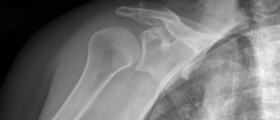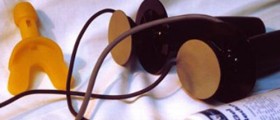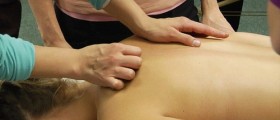
Once a condition called frozen shoulder occurs, pain relief and physical therapy are two most important parts of recovery. The treatment is rather easy, efficient and does not demand invasive approaches. However, the full recovery time may stretch through several months.
Physical Therapy for Frozen Shoulder
The first part of treatment consists of physical exercises which have a goal of increasing the motion capabilities of the joint and minimizing muscle atrophy in the area. Stretching is crucial due to the fact that it keeps the injured shoulder active. Therefore, working out with a personal physical therapist is the best possible way of overcoming frozen shoulder injury. Exercising about three times a day is considered to be optimal.
Application of heat through a moist source is yet another excellent approach. The heat administered this way will keep pain at bay, making the whole healing process easier to bear. Heat application of this type is recommended 10 minutes before any stretching or exercising, three times a day.
Other parts of the physical therapy may involve ultrasound, ice application and various other forms of rehabilitation. Moreover, the patient is advised to repeat the exercises and treatments even when the therapist is not there to assist.
Medications vs. Frozen Shoulder
Pain and discomfort can often stand in the way of recovery from frozen shoulder. If this is the case, medications can help. Anti-inflammatory medications are the best possible drugs for this purpose, removing pain or other sources of discomfort. Inflammation of the shoulder joint can also be dealt with by cortisone injections. This approach is known to be effective once combined with exercising and physical therapy.
Surgery vs. Frozen Shoulder
Sometimes, usually when all else fails, surgery for frozen shoulder may be a necessity. In these rare cases, the surgeon may manipulate one's shoulder adequately. During the procedure the patient will be under anesthesia. Therefore, this is not an actual surgery, but more like a physical manipulation of the frozen shoulder. However, intrusion into the adhesions in the affected shoulder may be an option as well. Namely, a device called arthroscope may be inserted in the affected area in order to cut through adhesions. Here, the surgeons need to react quickly and lead to capsular release in order to prevent relapse of the frozen shoulder condition.
All in all, regardless of the procedure necessary for the treatment of frozen shoulder, there is a high likelihood that one's range of movement will decrease afterwards, even though the decrease may be minimal.

















Your thoughts on this
Loading...